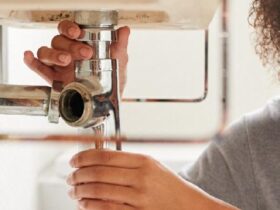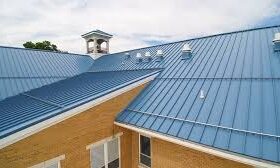In life, we need money to get by. It’s one of the definites in life, as well as taxes and having to eat. Most people work for money, but it always pays to try and get ahead. It’s nice to be able to live comfortably without stressing about your income.
And one way to get ahead is by sourcing passive income streams, like an investment property. Having a property portfolio is how many regular Australians get ahead.
But owning an investment property isn’t a set and forget means to passive income. You need to manage it actively, such as thinking about a tax depreciation schedule online and regular maintenance and repairs when necessary.
In this article we’ll share a glimpse into the checklist of an organized investment homeowner, so read on to discover more.
Tax Depreciation Schedule
Let’s explain what this means. Depreciation, when it comes to income tax, means a reduction in the value of an asset over its natural lifespan. For instance, equipment purchased for a business reduces in value over the years.
Even though property tends to appreciate, claiming the depreciation on your investment property against your other taxable income, such as from work or running a business, is tax effective.
To begin with, you should engage a qualified surveyor to survey your home and prepare a report. From there, you approach your accountant with the report, and they will do the schedule for you.
Now let’s move onto the other items on an organized investment property owner’s list.
Maintenance and Repairs
Being a landlord means you are responsible for maintaining your investment property in a liveable condition.
This means you need to ensure it is free from damage, apart from minor wear and tear.
For instance, if you own an older weatherboard home, you need to replace the weatherboards if they are rotting or falling off.
Another example is painting your property once every five or ten years, to keep it looking nice.
Furthermore, as a landlord, you are responsible for essential repairs. If the hot water system, or the heating/cooling systems break down, you need to fix them within an appropriate time frame. This is a non-negotiable aspect of owning investment homes. Your tenants pay you the rent to ensure you keep a habitable property for them to live in.
Landlord Insurance
This is another thing that most organized property investors have. Landlord insurance covers rental properties from damage by tenants. This is on top of property insurance that covers you for storms and flood damage.
Now, most tenants are good and will treat the home as if it were their own. But in case you get a bad apple who intentionally and maliciously damages your investment, landlord insurance will cover you. You can also withhold their bond in this case. Also Read – 4 DIY Garage Door Repair and Maintenance Hacks
Consider a Property Manager
Now, you may be tempted to deal with the tenants yourself, but this is a lot of work. Most investment homeowners engage a real estate agency to manage their property, and it is definitely worth the small fee they charge for this service. They can deal with all aspects of managing the home and will act as a go-between for you and your tenants.
Summing Up
In this helpful blog, we’ve shared a glimpse into the checklist of an organized investment homeowner. From tax depreciation schedules to repairs and maintenance, you are now fully informed. Don’t forget property and landlord insurance, and a property manager is worth their weight in gold. Good luck!















